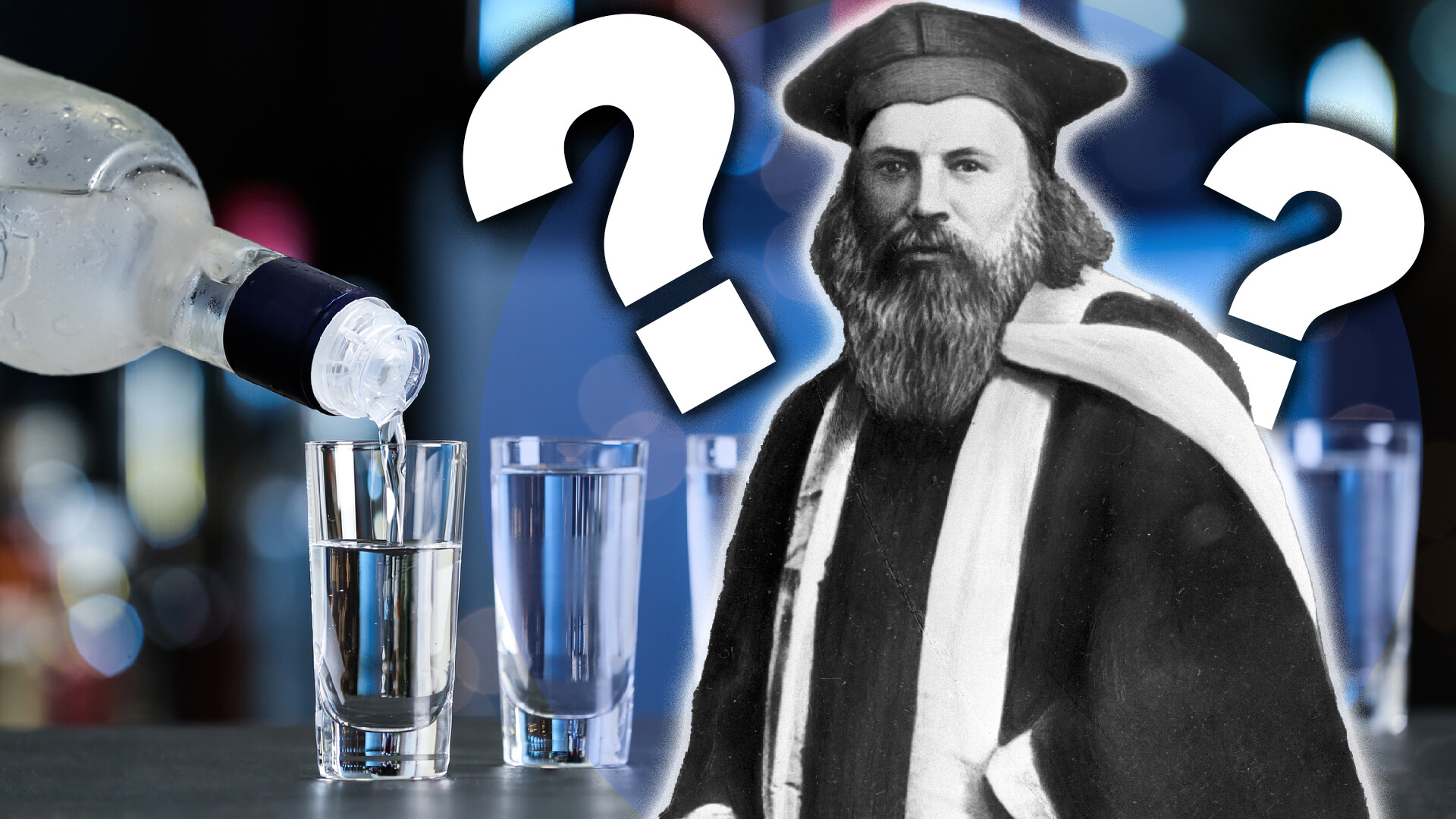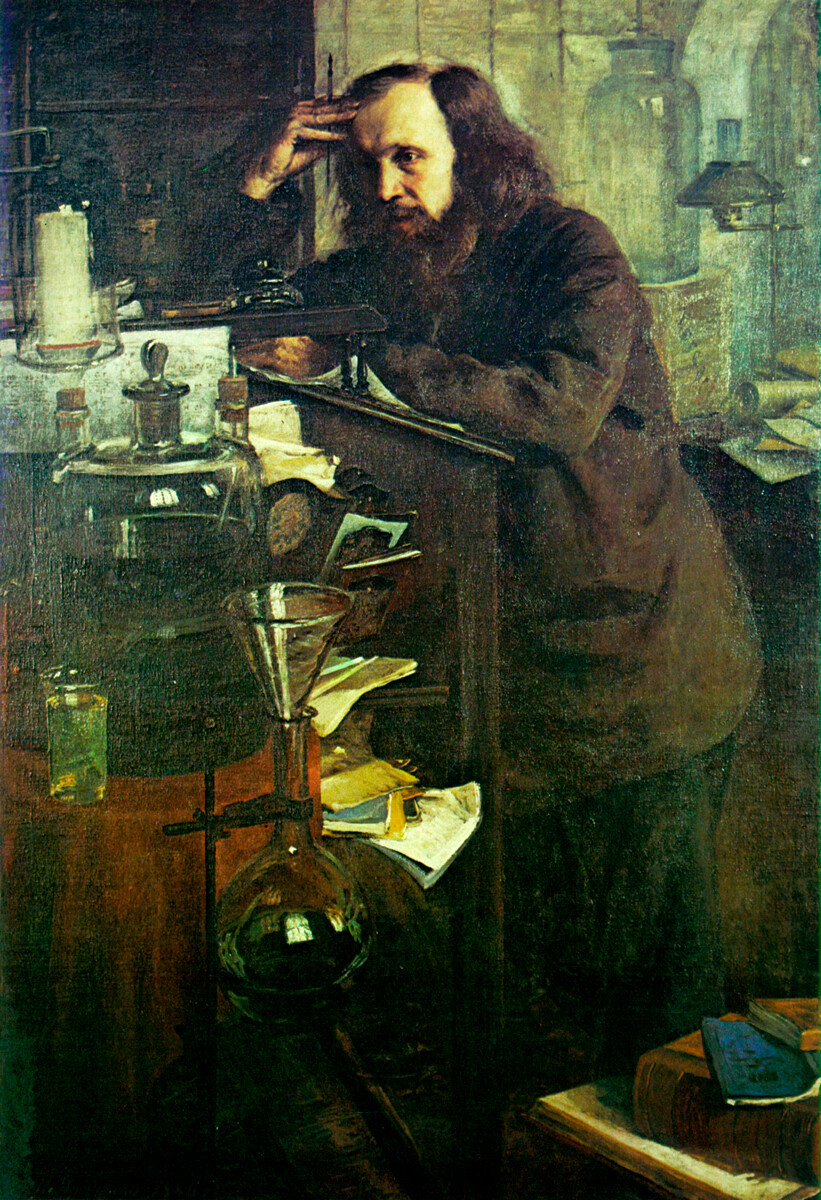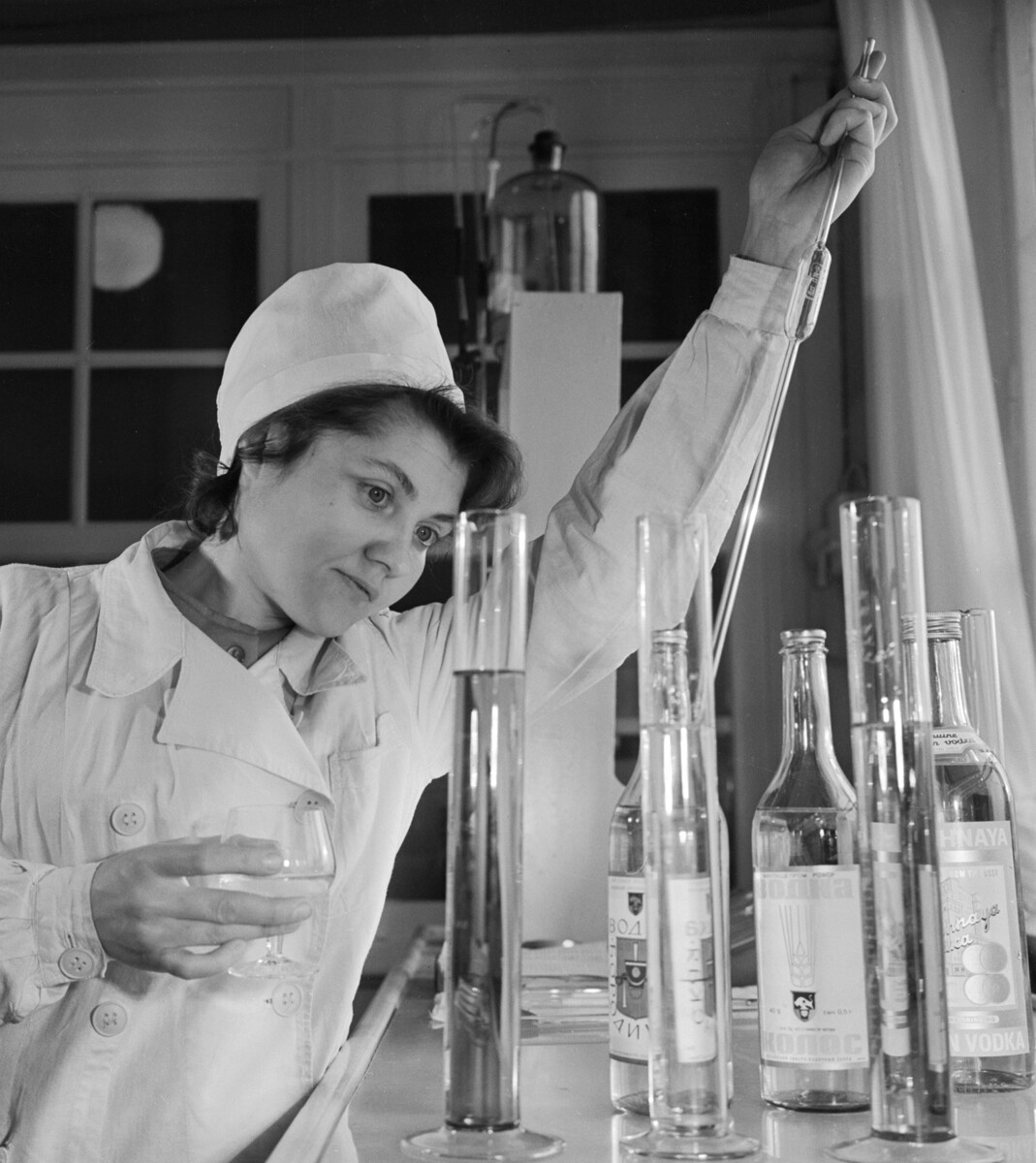
Dmitry Mendeleev’s doctoral thesis ‘On the combination of alcohol and water’(1865) initially had nothing to do with vodka. The scientist was trying to discover the reason behind the decrease of liquid’s amount when equal parts of alcohol and water are mixed. Why, then, is it still believed that he had a hand in the creation of the famous Russian drink?
Great Russian scientist Dmitri Mendeleev became famous worldwide as the creator of the ‘Periodic system of chemical elements’(1869) or, more commonly known, the ‘Mendeleev table’. He discovered the periodic law and created a table that included all the known elements, their chemical and physical properties and also allows one to understand the link between them. To this day, scientists use it in their work, yet it is so uncomplicated and clear that the table is also studied at school. However, before that, when choosing the topic for his doctoral dissertation, he decided to study the phenomenon that had not yet been explained by anyone.

Mendeleev wearing Oxford's academic dress.
SputnikNo one could understand why the liquid’s volume turns out to be under the initial amount when equal parts of alcohol and water are mixed. In a nutshell, the scientist discovered that molecules of alcohol and water interact and water’s molecules fill up the space between molecules of alcohol – scientifically, it is called ‘contraction’ and that’s why the final volume is smaller than the initial separate primary ones.
Simply put, Mendeleev became involved in the scientific study of the proper production of vodka. However, according to his biographers, Mendeleev did not drink anything besides dry red wine and used to say: “I know the taste of alcohol only as a chemist, just like the taste of any other poison.”

Mendeleev in his cabinet, 1886, Nikolay Yaroshenko.
Museum of Dmitry Mendeleev/Public DomainVodka has been around in Russia since roughly the 14th century. To this day, no historian can tell the precise year of vodka’s invention. It was called ‘bread wine’, polugar, gorelka, pennik – vodka was a pretty popular homemade drink. The problem, however, was that quite different drinks could be called vodka.
In 1894, officials decided to take vodka production under strict control and establish a new monopoly. And even when vodka was actually made by mixing alcohol and water, the question was what the correct proportion should be. Traditionally, vodka was made with 50% of alcohol and 50% of water – such a mix resulted in 41%-42% vol. In practice, this proportion was not respected either, and the strength of the resulting alcoholic beverage could vary greatly. But vodka connoisseurs have come to the conclusion that the best strength of vodka in terms of its effect on a person should be exactly 40% vol.
But how to achieve it? And that’s where Mendeleev comes in. To make vodka exactly 40% vol., the producers implemented Mendeleev’s discovery. Instead of mixing certain volumes, they started to weigh the ingredients – that way the contraction process did not mess up the alcohol content. This mixture was patented as ‘Moskovskaya special vodka’.

Diya Timokhina, the creator of several vodka sorts, 1968.
Valentin Kunov/TASSDear readers,
Our website and social media accounts are under threat of being restricted or banned, due to the current circumstances. So, to keep up with our latest content, simply do the following:
If using any of Russia Beyond's content, partly or in full, always provide an active hyperlink to the original material.
Subscribe
to our newsletter!
Get the week's best stories straight to your inbox